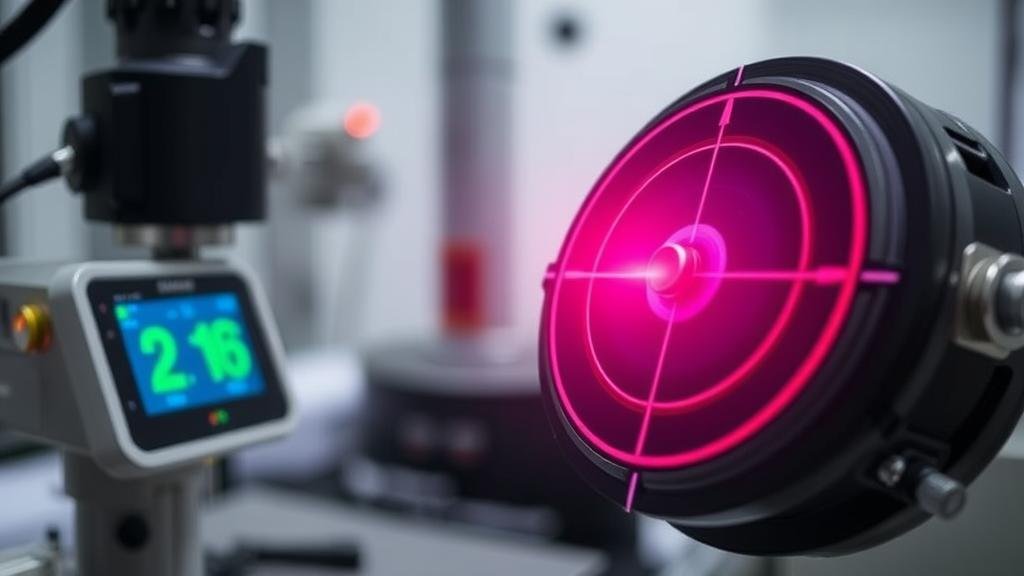Mastering Advanced Sensitivity Calibration for Micro-Targets
Mastering Advanced Sensitivity Calibration for Micro-Targets
Sensitivity calibration is a critical process in various fields such as materials science, physics, and engineering. When applied to micro-targets–objects or systems that operate on a microscopic scale–this calibration becomes even more complex and essential. This article delves into the intricacies of advanced sensitivity calibration, its methodologies, challenges, and applications, providing a comprehensive understanding for researchers and practitioners alike.
Understanding Sensitivity Calibration
Sensitivity calibration refers to the process of adjusting and validating the sensitivity of instruments or systems to ensure accurate measurements. It involves determining how small changes in input variables affect output results. In the context of micro-targets, this calibration is crucial as these targets may exhibit results that are highly sensitive to environmental disturbances, measurement errors, and even material properties.
Importance of Calibration for Micro-Targets
Micro-targets often operate in environments characterized by nanoscale variations and can be significantly affected by their surroundings. The importance of sensitivity calibration for these systems can be summarized as follows:
- Ensures precision: Accurate calibration leads to reliable data, essential for scientific research and development.
- Reduces error: Minimized uncertainties in measurements allow for better quality control in manufacturing processes.
- Improves performance: Calibrated systems perform better, enhancing the effectiveness of technologies in areas such as biomedical applications and nanoelectronics.
Methodologies for Sensitivity Calibration
There are several methodologies for performing sensitivity calibration, especially when dealing with micro-targets. Each method has its specific applications and nuances, and they include:
- Standard Calibration: This involves using known reference standards to compare and calibrate the sensitivity of the instrument or system actively.
- Dynamic Calibration: In this method, real-time adjustments are made based on environmental changes, allowing for ongoing sensitivity adaptations.
- Statistical Calibration: This approach applies statistical techniques to analyze the relationship between input variables and output responses, making it particularly useful in assessing uncertainty.
Challenges in Sensitivity Calibration
Calibrating sensitivity for micro-targets presents unique challenges:
- Scale Effects: At the micro-level, materials can behave differently than at macroscopic scales, leading to unexpected calibration results.
- Environmental Sensitivity: Micro-targets often have heightened sensitivity to environmental conditions such as temperature, humidity, and vibrations.
- Measurement Limitations: The precision of available measurement instruments often limits the effectiveness of calibration techniques.
Case Studies on Advanced Sensitivity Calibration
Understanding real-world applications through case studies can illuminate the principles of sensitivity calibration:
Case Study 1: Microelectromechanical Systems (MEMS)
MEMS devices, often used in sensors and actuators, require precise calibration to function effectively. A study showed that employing dynamic calibration techniques improved the sensitivity of pressure sensors used in automotive applications significantly. By regularly adjusting measurement settings based on environmental feedback, these sensors maintained optimal performance across varying conditions.
Case Study 2: Biomedical Devices
In the development of a microfluidic device for diagnostics, researchers implemented statistical calibration methods. By using large datasets to estimate measurement uncertainties, the team was able to ensure high levels of sensitivity and specificity in detecting biomarkers, which is crucial for early disease diagnosis.
Future Directions in Sensitivity Calibration
As technology advances, the methodologies and tools for sensitivity calibration will continue to evolve. Nano-technology and machine learning are paving the way for innovative calibration approaches that could enhance measurement capabilities in real-time, allowing for responsive adaptations to varying conditions. Also, the integration of artificial intelligence in statistical analyses could lead to more robust and predictive models for sensitivity calibration in micro-targets.
Conclusion and Actionable Takeaways
Mastering advanced sensitivity calibration for micro-targets is not just a matter of technical proficiency; it is a crucial aspect for ensuring the reliability and accuracy of measurements in various high-stakes applications. Practitioners should consider the following actionable takeaways:
- Regularly assess and calibrate instruments using appropriate methodologies to maintain high sensitivity.
- Stay informed about emerging technologies and methodologies to enhance calibration processes.
- Use case studies to inform and guide calibration strategies.
By implementing these strategies and understanding the depth of sensitivity calibration, researchers and engineers can significantly enhance the efficacy of systems involving micro-targets, ultimately leading to better outcomes in their respective fields.



